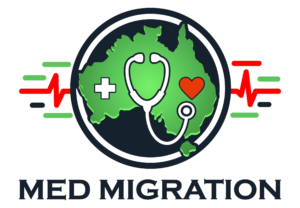Australia continues to face a growing shortage of doctors, especially in regional and rural areas, making it essential for employers to look beyond domestic talent. One of the most effective ways for medical employers to bring in overseas-trained doctors is through Labour Agreements — a powerful but underused tool in the employer-sponsored migration landscape.
If you’re a doctor seeking sponsorship or a clinic looking to fill urgent vacancies, understanding how Labour Agreements work could open up faster, more flexible migration pathways.
What Is a Labour Agreement?
A Labour Agreement is a formal arrangement between an Australian employer and the Department of Home Affairs. It allows the employer to sponsor overseas workers in occupations that are experiencing labour shortages, even if those roles don’t appear on standard skilled occupation lists or require different eligibility settings.
For healthcare, Labour Agreements are particularly useful when:
- The employer is in a Designated Area Migration Agreement (DAMA) region.
- The overseas doctor doesn’t meet standard visa criteria, such as age or English thresholds.
- The position is outside the standard skilled migration lists or requires bespoke conditions.
How Labour Agreements Benefit Employers and Doctors
🔹 For Employers:
- Customised terms: Labour Agreements offer flexibility around standard visa requirements.
- Broader access to talent: Employers can fill persistent gaps in GP clinics, aged care facilities, or hospitals, particularly in underserved areas.
- Faster recruitment: With streamlined processing and fewer restrictions, you can onboard much-needed doctors sooner.
🔹 For Overseas Doctors:
- Alternative PR pathways: Labour Agreements often lead to Subclass 482 or Subclass 186 visas, with relaxed age and English language criteria.
- Regional incentives: Many agreements are linked to regional areas, which offer relocation support, lifestyle benefits, and fast-tracked PR.
- Opportunities despite barriers: Doctors who may be over age 45, or who haven’t met the usual skills assessment criteria, may still be eligible via a Labour Agreement.
Types of Labour Agreements Relevant to Healthcare
✅ Company-Specific Labour Agreements
These are negotiated between a single employer and the government to meet workforce needs — ideal for hospitals or clinics consistently unable to fill roles.
✅ Designated Area Migration Agreements (DAMAs)
DAMA regions are specific areas that have negotiated their own list of in-demand occupations and visa concessions. Popular DAMA regions for healthcare include:
- Northern Territory
- Far North Queensland
- South Australia
- Victoria’s Great South Coast
- Western Australia’s Goldfields
Each DAMA agreement has its own list of eligible health-related occupations, often including General Practitioners, Aged Care Nurses, Mental Health Nurses, and Allied Health professionals.
👉 Explore DAMA regions and requirements here
What Visa Types Are Available Through Labour Agreements?
Labour Agreements commonly support:
🔹 Subclass 482 – Temporary Skill Shortage Visa
- Up to 4 years
- Can include concessions on English, skills, or age
- Pathway to permanent residency (after 2-3 years)
🔹 Subclass 186 – Employer Nomination Scheme (Direct Entry Stream)
- Permanent Residency
- Available with age and skills assessment concessions in some agreements
👉 Read more about visa options for overseas doctors
How Do Employers Apply for a Labour Agreement?
- Demonstrate Need: The employer must show efforts to hire locally and a genuine need to fill positions.
- Negotiate Terms: With the Department of Home Affairs, the employer outlines the roles, locations, and requested concessions.
- Sign the Agreement: Once approved, the employer can begin nominating candidates under the agreed terms.
- Sponsor Doctors: Using the agreement, the employer can sponsor suitable overseas doctors for 482 or 186 visas.
How MedMigration Can Help
At MedMigration, we help both employers and doctors navigate the complexities of Labour Agreements and healthcare migration:
✅ For Employers:
- Support with preparing and negotiating Labour Agreements
- Sourcing eligible overseas doctors
- Managing the sponsorship and visa application process
✅ For Overseas Doctors:
- Guidance on eligibility for Labour Agreement roles
- Job matching with employers who can sponsor via Labour Agreements
- End-to-end visa support, from skills recognition to PR planning
Final Thoughts: Labour Agreements Are a Win-Win for the Healthcare Sector
With Australia’s chronic shortage of doctors — especially in rural areas — Labour Agreements offer a flexible, strategic solution for medical employers and overseas-trained professionals alike. Whether you’re a doctor struggling with visa eligibility, or a clinic desperate to fill positions, this pathway could be your key to long-term success.
📌 Ready to explore Labour Agreement sponsorship?
Contact us at MedMigration and let our expert team support you with job matching, registration, and visa applications.


Comments are closed